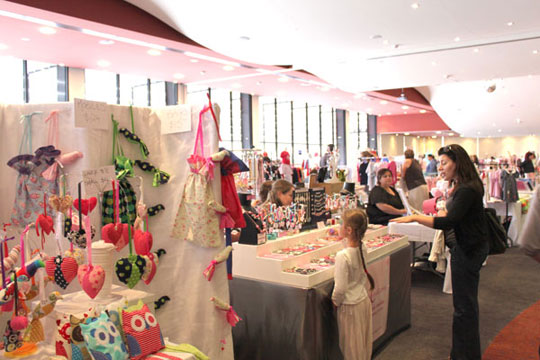Marketing
5 Tips For Setting Up A Successful Market Stall

Starting your own business is extremely difficult. There is a plethora of barriers to entry, not least the necessary capital investment that many startups required. Setting up a market stall therefore is one way many budding entrepreneurs choose to access their new market. The risks involved in setting up a market stall are also considerably lower and one can trial new ideas without spending large amounts on premises, stock and staff. Moreover, studies suggest that during the last recession market stalls actually out performed many high street stores.
Whilst getting set up is relatively straightforward, setting up a successful market stall requires a good deal of thought and preparation. A successful stall could be the seed of a highly profitable business. Here are five tips to get you on your way.

1. Do your research
The foundation of any successful market stall is good market research. Is there a demand for the product you are selling? If the answer is not a resounding ‘yes’ you are already in the high risk zone and could potentially be setting yourself up for failure.
Your research should involve visiting potential markets, to discover who its visitors are and whether you can connect with them. It is important to ensure you place your stall in a market that fits your ethos and product. In addition, you need to discover who your competitors are and find out how they are doing? What they are pricing their goods at? What can you offer that they do not?
Finally, how will your products sell? Is there a consistent demand for them all year around or are they seasonal? Will you be able to sell enough of them to make money?
2. Plan your finances
This leads on nicely to the next tip for setting up a successful market stall. You need to have a comprehensive plan for your finances. This includes detailing your fixed costs (things like your market stall rent) and variable costs (things that vary with production volume) to use as a basis for profit calculations. Then, using your market research, make estimates as to how much you think you can actually make.
Ask yourself the tough question. Is this small business really viable?
3. Set up your stall
The next step is arguably the most fun; it is time to set up your stall. Whilst keeping with the style and setting of the market, your stall needs to stand out and it is up to you to find a way to ensure it does this. Take a look at www.ral-display.co.uk/display-boards for interesting ideas to make your stall stand out from the rest. It is essential it does so to draw in customers.
The stall should portray a clear brand and message; one that you can echo online and in your other marketing channels. Setting up a social media account is a great way to get your message out to potential punters. Explore all avenues of attracting new customers.
4. Put in the hard graft
Once the stall is set up there is nothing left to do but put in the hard work. This involves interacting with your customers and working tirelessly to build up your reputation and brand. In the early days especially, there will be some tough times and you will make mistakes. Ensuring you learn from this is essential if you are going on to form a successful business.
As important as working hard is to forge relationships not only with your customers, but the stalls around you. These are the guys who will be able to help you out in times of emergency and the value of such relationships should not be underestimated.
5. React to the market
Finally, as you learn and grown as a business it is imperative to respond to your customers and to the way the market moves. Those conversations you were having with your customers need to be put to use. If clients are responding particularly well to a certain product, capitalise on this and expand that line further or use it to attract new customers from further afield.
As well as being reactive, you should also have your ear to the ground at all time and anticipate new trends and new potential product lines. Being a first mover in a market environment can be as valuable as it is for businesses of any size.
-

 Tech11 years ago
Tech11 years agoCreating An e-Commerce Website
-

 Tech11 years ago
Tech11 years agoDesign Template Guidelines For Mobile Apps
-

 Business6 years ago
Business6 years agoWhat Is AdsSupply? A Comprehensive Review
-

 Business10 years ago
Business10 years agoThe Key Types Of Brochure Printing Services
-

 Tech8 years ago
Tech8 years agoWhen To Send Your Bulk Messages?
-

 Tech5 years ago
Tech5 years ago5 Link Building Strategies You Can Apply For Local SEO
-

 Law5 years ago
Law5 years agoHow Can A Divorce Lawyer Help You Get Through Divorce?
-

 Home Improvement6 years ago
Home Improvement6 years agoHоw tо Kеер Antѕ Out оf Yоur Kitсhеn































